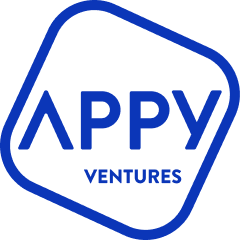When thinking about how to launch an app, there’s not just one way to do it, but over the years we’ve noticed a particular launch model that successful app entrepreneurs use again and again because it works. Being aware of this model is half the battle, and I wanted you to see it for yourself! I’ve included the main outline and brief description of each stage of app development.
1. The Idea:
Bam. It hits you like a freight train — the idea you’ve been waiting for! The USP is good, your friends, family, and business colleagues think it’s fantastic, and you’re already excited. Stage one, complete? Well, not quite — start researching the competition! Are there competitors? A yes can be positive because it shows that there’s a market you can cut your way into. Is your idea Addictive, Viral, and Monetizable? Those are usually the cornerstones of a successful app idea— but we can look into this more in #2 below. How to validate your app idea is a critical stage (and read).
2. Workshopping:
Successful app entrepreneurs think big picture as early as possible. Take time to understand what success means to you and all your stakeholders, define your app in an elevator pitch, build out user journeys for your app (who your users are, how they interact with your app, etc.), identify how you can leverage mobile innovation to maximise user engagement and stand out in your industry, build an 18-month product roadmap listing all features that will be added to create the best app possible, mockup the key screens of your app, and discuss your specific marketing strategy and user acqisition process.
This is something we love doing with Founders – and when thinking about how to launch an app, the Workshop sets you off in the right direction.
3. Prototype:
When thinking about how to launch an app, my favorite trick is to partner with a company that has an audience in your target sector, and work with them to get a functioning prototype to show their potential users and investors. You telling people your idea is nowhere near as powerful/convincing as showing them your idea. Create kick ass designs of the key user journeys and then make them interactive so you can tell your stories to investors/partners. Make sure you take the time to practice your pitch because creating and showing off a prototype will make or break you. Read here for more info on how to create a mobile app prototype.
4. Business Model Review:
Reevaluate your business model and make sure the technology you’re building is still congruent. If you want to build a vanity product that does not make you money — then great and good luck… please stop reading now. If you want to change your life and create a meaningful app that makes a difference to the world and becomes a business — then (h)Appy days.
Don’t hold back, and be open to morphing both the app and business to work the best they can together. I’ve found my Private Equity finance background is really useful for this stage, and make sure you find an experienced individual who can help you think through your model. A couple of useful resources are understanding CAC to LTV for your business and the lean canvas (template doc here) which is a 1 page business plan that forces you to think about the right questions.
5. MVP Testing:
OK, so we’ve built phase 1 of the technology, the minimum viable product (MVP) and now it’s ready for showtime… Not quite! Test, test, test! Take the time to put your app through rigorous testing and apply feedback appropriately. Do not rush this stage! To be honest, you’ll be working hard on your launch strategy too, so a week of testing might be welcome.
6. Fundraising:
The name of the game is to create an MVP with enough hook to get initial users excited and using it. By working on generating great data/ analytics, you can demonstrate that you have proven the concept of the app. Now it’s time to show off your promising venture to early investors for initial fundraising. Fundraising pre-MVP is possible, but you will not achieve anywhere near the same valuation once you’ve self-funded an MVP and proven the concept enough to de-risk investors through your app development.
7. Market Launch:
OK! So now that you have funds, you can iterate the MVP and build in the next set of features your app needs to continue kicking ass. You can also spend the time/money on marketing for the next launch. These are incredibly exciting times and is your chance to scale the business.
8. Series A:
You’ve learnt how to launch an app, got some traction and now it’s time to take your company back out to investors and tell them why you’re worth investing in. This is what Silicon Valley startups seem to spend their lives doing — raising huge amounts of money!
—
So how to launch an app?
I encourage you to stop for a moment and think about what stage you’re in. If you need help, get in touch.
If you’ve skipped any stages, go back and formally think through them. It will pay off in the long run, I can promise you that.
